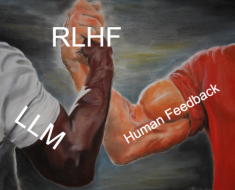For all their remarkable abilities, large language models (LLMs) have an Achilles heel, which is their tendency to hallucinate, or make assertions that sound plausible but are factually inaccurate. Sometimes, these hallucinations can be quite subtle: an LLM might, for instance, make an assertion that’s mostly accurate but gets a date wrong by just a year or two.
To help detect such subtle hallucinations, Amazon has released RefChecker (the “Ref” stands for “reference”), a combination of a new framework for hallucination detection and a benchmark dataset for assessing hallucinations in various contexts.
Where previous hallucination detection frameworks used sentences or short phrases to characterize the factual assertions in LLM-generated texts, RefChecker instead uses knowledge triplets with a <subject, predicate, object> structure — the same structure used to represent data in knowledge graphs. This enables a finer-grained evaluation of an LLM’s output, which should be more precise and more informative.
The benchmark dataset covers three distinct settings: zero context, in which LLMs generate texts to answer a question without any reference texts; noisy context, in which the LLMs are provided with a list of retrieved documents that may or may not contain accurate information (the retrieval-augmented generation, or RAG, setting); and accurate context, in which LLMs are provided with one accurate document. The dataset includes 100 examples for each setting.
Hallucination detection
The goal of hallucination detection is to check the factuality of LLM-generated responses against a set of references. The problem setting raises three chief questions: (1) How and where do we find the references? (2) At what level of detail will we check the responses? And (3) how do we categorize the claims in the responses?
1. Finding references
RefChecker can accommodate three different ways of answering the question about finding references, corresponding to the three types of data in the benchmark dataset: zero context (e.g. open question answering); (2) noisy context (e.g., retrieval-augmented generation); and (3) accurate context (e.g., summarization).
The examples in the benchmark dataset are randomly sampled from the following data sources:
|
Setting |
Data source |
Task |
References |
| Zero context | NaturalQuestions (development set) | Closed-book question answering (QA) | Annotated long answer |
| Noisy context | MS MARCO (development set) | Retrieval-augmented generation (RAG) | Retrieved passages |
| Accurate context | databricks-dolly-15k | Summarization, closed QA, information extraction | Input context |
2. Evaluation granularity
Unlike existing methods that analyze paragraphs or sentences, RefChecker decomposes LLM responses into knowledge triplets. This allows us to test the factualness of individual knowledge points but also provides more informative and precise insights.
Informally, the claim is the unit to be checked. Previous works used sentences or short phrases excerpted from the LLM-generated text as the claims. RefChecker instead explores representing claims with knowledge triplets. This approach is inspired by knowledge graphs, which employ triplets with a <subject, predicate, object> structure to encapsulate factual knowledge. Knowledge triplets capture finer-grained information about the content of LLM-generated texts than sentences or sub-sentences do. The following is an example of a sentence and the corresponding fine-grained triplets.
“Richard Mulligan played Mr. Kincaid on The Partridge Family.”
|
Subject |
Predicate |
Object |
| Richard Mulligan | played role of | Mr. Kincaid |
| Mr. Kincaid | character on | The Partridge Family |
3. Claim categorization
Rather than declaring the entire response hallucinatory or not, RefChecker inspects the claims embedded in an LLM-generated text. The basic relationship between an LLM’s response to a prompt and the corresponding references can be visualized as a Venn diagram.
The intersection between the response and the references denotes claims that can be directly verified, which are categorized as either entailments (green check marks) or contradictions (red crosses), depending on whether they are supported or refuted by the references.
In practical applications, the references may not always provide sufficient evidence to verify all claims. In such cases, assessing the claims’ truthfulness requires additional evidence (orange question marks); we refer to such claims as neutral.
These three categories align closely with the categories support, refute, and not enough information within the fact-checking literature, and they are commonly used in natural-language inference (NLI). RefChecker uses this three-way classification, rather than conventional binary labels, to precisely model the relationship between responses and references.
RefChecker pipeline
RefChecker consists of two configurable modules: a claim triplet extractor, E, and a hallucination checker, C. You can also configure how the results are tallied, to translate between detection at the triplet level and hallucination reports at the response level. The modules can be extended and improved individually.
We found that LLMs are generally good at extracting claim triplets from input texts. In the initial RefChecker release, we use both GPT-4 and Claude 2. We will provide a Mixtral-8x7B open-source extractor in our next release.
The degree of agreement between the claim triplets from the response and reference texts can be assessed either manually or automatically. We will soon be releasing an annotation tool that can be used for manual assessment. In the initial RefChecker release, we also offer automatic checkers based on GPT-4, Claude 2, and RoBERTa-NLI. More open-source checkers such as AlignScore and our own Mistral-based checker will be available soon. We have found that majority voting among the automatic checkers provides the best agreement with human annotation.
Get started with RefChecker
RefChecker is now accessible on our GitHub repo. The package can also be installed using pip. To get started, refer to the QuickStart section in our README. There, you’ll find detailed instructions on how to use RefChecker for extracting knowledge triplets, detecting hallucinations at the triplet level, and evaluating your own LLM.
We believe that detecting and pinpointing subtle, fine-grained hallucinations is the first step toward effective mitigation strategies. For feedback, feel free to reach out via GitHub issues. We welcome and look forward to your contributions and improvements through pull requests.
Acknowledgements: Lin Qiu, Zheng Zhang





